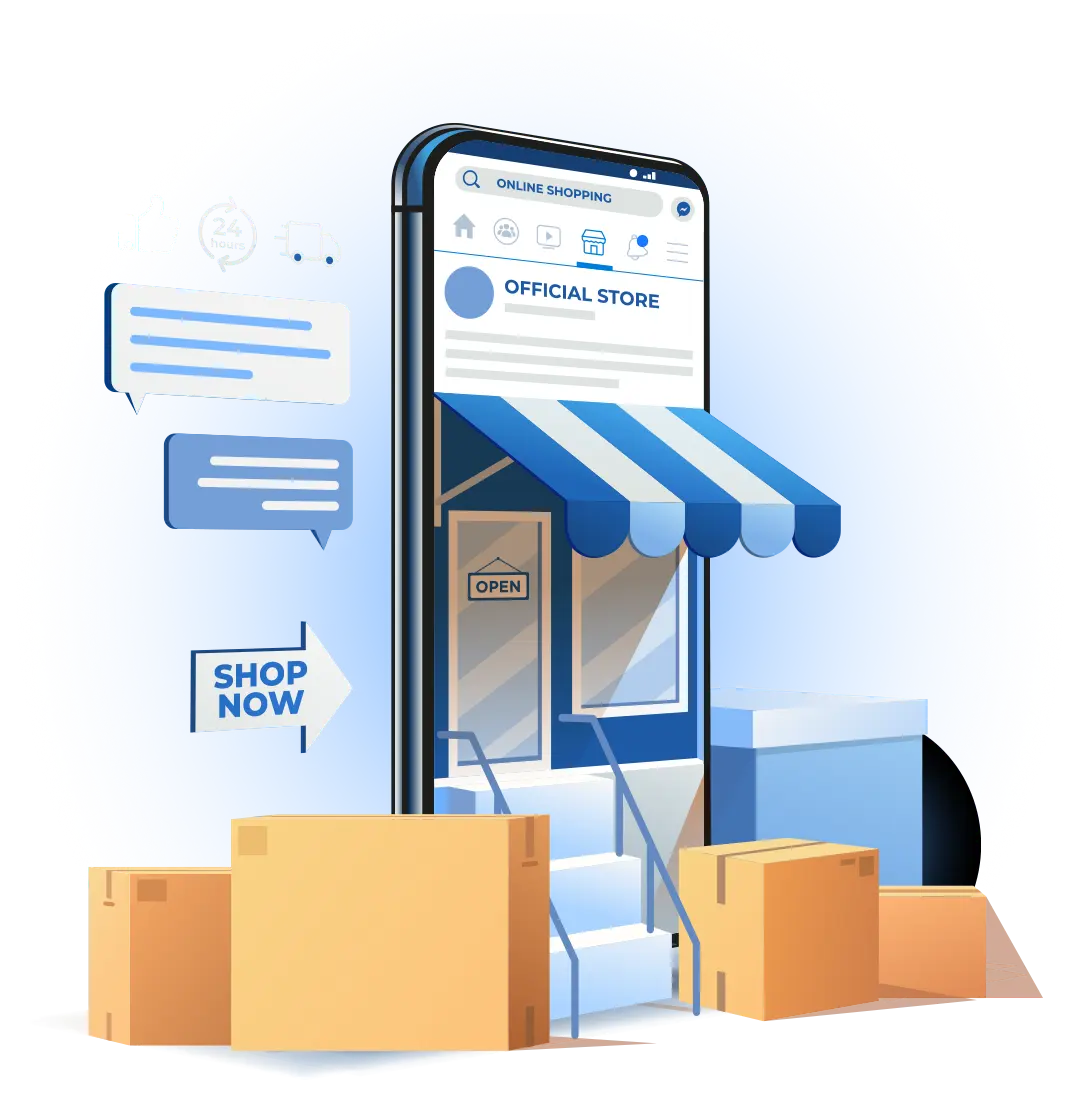In the ever-evolving landscape of digital commerce, one paradigm has consistently dominated conversations over the past few years: composable commerce. Hailed by analysts and technology vendors as a revolutionary alternative to rigid, monolithic platforms, composable commerce paints a compelling picture of unparalleled agility, modularity, and true vendor independence. The statistics are certainly persuasive; Gartner, for instance, predicts that by 2027, organizations embracing a composable approach will outpace their competitors by a remarkable 80% in the speed of new feature implementation.
The vision is undeniably attractive. Imagine a digital commerce ecosystem where you can freely mix and match best-of-breed services – a top-tier Product Information Management (PIM) system here, a cutting-edge Order Management System (OMS) there, all seamlessly connected via robust APIs. This approach promises the flexibility to scale precisely where needed, innovate rapidly, and pivot with market demands without being constrained by the limitations of a single, all-encompassing platform.
However, for a significant segment of the market, particularly mid-market distributors, the journey to composability has been far from the smooth, API-driven path often envisioned. While the conceptual framework is compelling, the practical execution often reveals a much more intricate and challenging reality.
The Reality Check: Composability Isn’t Plug-and-Play
Composable commerce has captured the imagination of businesses looking for ultimate flexibility and agility. But beneath the promise of mix-and-match best-of-breed solutions lies a crucial prerequisite: a mature digital foundation. This isn’t just about having the right tech; it’s fundamentally about internal capabilities.
Successful composable implementation hinges on a company’s ability to expertly manage a microservices architecture, maintain rock-solid API integrations, continuously monitor system health, and meticulously handle version control and security. It’s a significant leap from the all-in-one platforms many businesses are used to.
The Mid-Market Dilemma: A Lack of Bandwidth and Expertise
This is precisely where many mid-sized organizations hit a roadblock. They often lack the in-house engineering bandwidth and the specialized enterprise-grade integration expertise required to orchestrate 20 to 50 discrete services into a cohesive, reliable commerce platform. We’re talking about more than just connecting systems; it’s about making them sing in harmony, consistently and securely.
In such scenarios, pursuing composability without strong governance and the necessary internal muscle often leads to fragmentation. We call this phenomenon “disposable commerce”: an expensive, brittle, and notoriously difficult-to-scale solution that fails to deliver on the very promises of agility and innovation. It becomes a tangle of integrations that breaks with every update and demands constant, costly intervention.
The SaaS Trade-Off: Simplicity vs. Customization
On the flip side, traditional SaaS (Software-as-a-Service) platforms present a seemingly easier path. They offer:
- Ease of use: Typically more intuitive interfaces and less technical overhead.
- Lower maintenance: The vendor handles infrastructure, updates, and security.
- Faster onboarding: Quicker setup times mean you can get to market sooner.
However, this simplicity often comes at a cost. Traditional SaaS platforms typically fall short on customizability and integration depth. This is a significant drawback, especially for businesses with complex operational needs like:
- Intricate ERP workflows
- Highly specific industry-specific pricing logic
- Demanding omnichannel inventory management requirements
For these businesses, a “one-size-fits-all” SaaS solution might feel like a straitjacket, limiting innovation and forcing compromises on critical business processes.
The Balanced Path: A Structured, Composable Core
Composable commerce offers an exciting vision, but as we’ve discussed, its full potential is often hampered by the complexities of integration and the demanding internal capabilities it requires. For many businesses, particularly mid-market distributors, the choice between ultimate flexibility and practical manageability can feel like a no-win situation.
At Unilog, we believe there’s a better way. We’ve taken a pragmatic, purpose-built approach to composable commerce that we call “composability with discipline.” Our CX1 Platform is engineered to deliver the inherent flexibility of a microservices architecture alongside the reliability and ease-of-use of a SaaS experience. It’s about getting the best of both worlds without the overwhelming overhead. Here’s how we achieve this balanced path:
A Hybrid Approach to Composable Excellence
- SaaS-like Onboarding and Experience: We understand that time-to-value and ease of use are paramount. Our platform offers intuitive admin tools, a modern UI/UX, and templated deployments that provide a SaaS-like onboarding experience. This means businesses can get up and running quickly without drowning in initial setup complexities.
- Deep Composable Backend: Our composability isn’t just skin deep, restricted to the user interface. It’s deeply rooted in the data and integration layers of the platform. This allows for true modularity and flexibility where it matters most, enabling powerful customisation and integration capabilities without sacrificing stability.
- Extensibility by Design: We’ve built the CX1 Platform with extensibility at its core. This means customers can easily add custom fields that seamlessly flow through the entire system – from the underlying data model to the APIs and the user experience – all without requiring bespoke, fragile code. This dramatically reduces the need for expensive, time-consuming custom development.
- Tenant-Specific ERP Connectivity: Integrating with existing Enterprise Resource Planning (ERP) systems is often a major hurdle. Our platform addresses this with tenant-specific ERP connectivity, powered by a proprietary ESB-like integration framework. This framework supports sophisticated orchestration logic, meticulously tailored to each customer’s unique ecosystem, ensuring seamless and reliable data flow.
Architected for Scalability and Simplicity
This isn’t just architectural theory; it’s the result of meticulous engineering. We’ve deconstructed our platform into over 600 microservices. From this granular level, we’ve then rationalized them into 90+ well-defined Composite APIs. Each of these Composite APIs encapsulates core business objects such as catalog management, pricing, tax calculations, order processing, and content management.
This deliberate level of abstraction is key. It allows us to scale rapidly to meet fluctuating demands while significantly reducing operational complexity for our clients. By providing these pre-composed, domain-specific APIs, businesses gain the benefits of composability – flexibility, scalability, and integration power – without the burden of orchestrating hundreds of individual microservices themselves.
In essence, “composability with discipline” means we handle the underlying complexity, allowing you to focus on business and delivering exceptional digital commerce experiences.
The Tech Backbone: Scalable, Secure, Multi-Tenant
It’s one thing to promise flexibility and reliability; it’s another to deliver it with a robust, scalable, and secure architecture.
The foundation of our CX1 Platform is built on cutting-edge cloud-native technologies, meticulously engineered to handle the demands of modern digital commerce, especially for mid-market distributors.
A Cloud-Native Core for Unmatched Scalability
The CX1 Platform is powered by a multi-tenant architecture leveraging Google Cloud Platform (GCP) and its components and services to manage and scale our services efficiently. The benefits are significant:
- Autoscaling Clusters: Our clusters are designed to automatically scale up or down in real-time based on demand. Whether it’s a seasonal peak, a flash sale, or sustained growth, the platform dynamically adjusts resources to ensure consistent performance and availability without manual intervention.
- Isolated Data Contexts: Security and data integrity are paramount. Each customer operates within an isolated data context, complete with tenant-specific databases and Redis-backed config states. This robust isolation ensures that your data remains separate and secure from other tenants, offering enterprise-grade privacy and compliance.
Precision Integration with Automated Pipelines
We understand that ERP integration is often the most complex and critical piece of a distributor’s digital commerce puzzle. Our architecture addresses this with surgical precision:
- Automated Integration Pipelines: Our integration pipelines are fully automated through GitLab CI/CD. This continuous integration and continuous deployment approach ensures that changes are tested and deployed rapidly and reliably.
- Customer-Specific ESB Artifacts: For each customer, our pipelines generate customer-specific ESB artifacts. CX1 Connect provides a robust, enterprise-grade integration framework that allows us to model complex business logic and data flows.
- Isolated Pods with Version Control: These artifacts are deployed into isolated pods, each under strict version control. This granular control allows us to manage ERP integrations with unparalleled precision. We can update specific integration logic without affecting other parts of the system, ensuring high availability and maintaining data consistency across your most intricate enterprise workflows.
By combining the power of GCP with meticulous data isolation and automated, precision-engineered integration pipelines, the Unilog CX1 Platform delivers the promised agility and reliability of composable commerce, all while abstracting away the underlying architectural complexities. It’s about empowering your business with a truly modern, scalable, and secure digital foundation.
The Mid-Market Imperative: Balancing Speed, Flexibility, and Budget in Digital Commerce
In today’s economic climate, every digital investment is under intense scrutiny. It’s no longer enough to simply adopt new technology; businesses need to see a clear, rapid return on investment, all while ensuring their choices don’t box them into a corner down the line. As IDC reports, over 45% of mid-market CIOs are explicitly prioritizing platforms that offer rapid deployment alongside long-term extensibility. This dual pressure – to deliver immediate business value while remaining future-ready – is fundamentally reshaping technology buying criteria across industries.
For technology leaders in the distribution sector, this challenge is particularly acute. You need an eCommerce platform that can not only handle the unique complexities of your business but also evolve with market demands without breaking the bank or requiring an army of highly specialized engineers.
Your ideal eCommerce platform should:
- Deliver strong out-of-the-box capabilities, providing immediate value, while simultaneously enabling deep configuration to perfectly align with your unique business processes.
- Support rapid innovation for new features and customer experiences, all without causing disruptive downtime or accumulating crippling technical debt.
- Provide genuine integration agility, allowing seamless connection to your critical systems (like ERP) without demanding a full-time team of dedicated API engineers.
- Allow for modular scaling, ensuring clear separation of frontend, backend, and your crucial ERP logic, so you can grow efficiently and target resources where they’re needed most.
Why Unilog’s CX1 Platform is the Right Fit: A Balanced Approach
At Unilog, we’ve built our CX1 Platform specifically to address these core needs. We don’t believe you should be forced to choose between the simplicity of a packaged solution and the limitless (but often overwhelming) flexibility of pure composability. Instead, we offer a balanced, modern architecture designed to empower mid-market distributors.
Here’s why the CX1 Platform is uniquely positioned to meet today’s demands:
- High Composability Where It Matters Most: We focus our composable power on the critical layers: data, integrations, and extensibility. This strategic approach provides the agility you need for custom workflows and seamless system connections, without introducing unnecessary complexity at every layer.
- Low Operational Complexity: Thanks to our structured API groupings (our 93 Composite APIs built from 600+ microservices) and highly automated orchestration, our solution delivers the benefits of a modern architecture with remarkably low operational overhead. You get the power of composability without the burden of managing countless individual services.
- Real-World Validation: This isn’t just theory. Unilog’s CX1 Platform has a proven track record, with successful rollouts across dozens of distribution businesses that grapple with highly complex ERP backbones and intricate operational requirements. We understand your challenges because we’ve solved them, repeatedly, in the real world.
In a climate where every investment counts, Unilog’s CX1 Platform offers a powerful, pragmatic path forward. It’s about getting the digital commerce capabilities you need today, with the flexibility to innovate tomorrow, all built on a foundation designed for your business reality.

